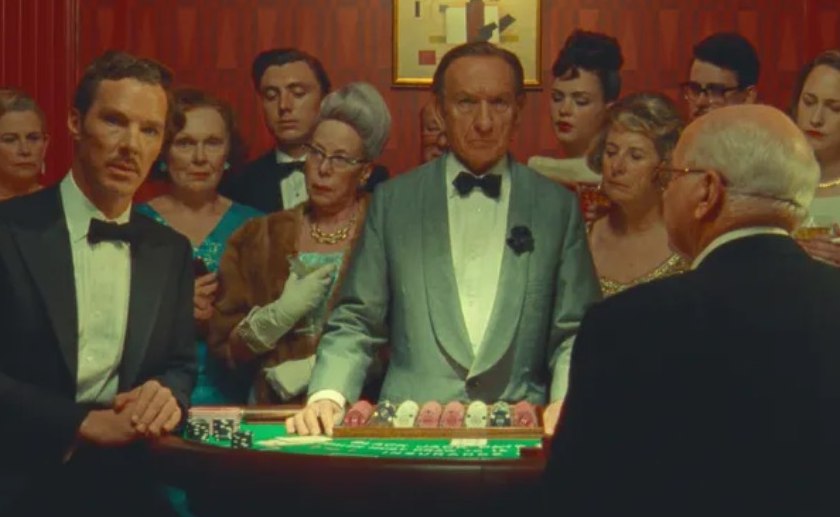Wes Anderson‘s most recent film, “Poison” (2023), is a testament to his skill at crafting compelling storylines that captivate spectators in the enthralling world of film. Released on Netflix as a part of a short film series, “Poison” is based on a famous Roald Dahl short story and promises a fast-paced, suspenseful cinematic experience.
Known for his unique storytelling approach, Wes Anderson takes us to a universe where India is ruled by the British. The compelling story revolves around Timber Woods, who finds himself at his friend Harry Pope’s house by accident. There, he finds himself in a dangerous situation where a poisonous snake called a krait is menacingly coiling around Harry’s tummy. In the fourth and last of Anderson’s adaptations of Dahl’s lesser-known short stories, “Poison” stars Benedict Cumberbatch, Ralph Fiennes, and Ben Kingsley, among other outstanding actors.
tvacute dives into the complexities of “Poison,” examining the story, the characters, and Wes Anderson’s subtle storytelling decisions. Come along as we peel back the layers of this short film, which is a cinematic gem that combines mystery, tension, and shocking surprises.
Poison (2023) Movie Plot
The film “Poison” begins with the charismatic Dev Patel‘s character, Timber Woods, visiting his friend Harry Pope’s home. After what at first appears to be a friendly visit turns terrifying, Timber finds Harry in an unusual condition with a lethal krait limiting his speech and movement. In order to help remove the poisonous visitor, Timber calls in local physician Dr. Ganderbai, who is portrayed by the seasoned Ben Kingsley, due to the urgency of the issue.
The team is racing against time to carefully rescue the snake as the story is told in a series of gripping moments. Harry receives antivenom, and the mattress is saturated with chloroform to render the snake unconscious. The characters struggle to deal with the potentially fatal scenario, and the tension in the room grows.
But “Poison”‘s finale takes an unexpected turn that has a lasting effect on the story. The story becomes more intricate when it is revealed that Harry’s stomach did not contain a krait. When the characters gradually pull back the covers to reveal the reality, interesting questions are raised by the snake’s absence. Was it all Harry’s imagination, or was there ever a krait? The spectator is left in suspense and contemplation by the lingering uncertainty.
Roald Dahl has a prominent role in the movie. Though he only makes a fleeting appearance, Dahl’s character provides insights into the story by talking about the nature of kraits and reciting the last few lines that allude to Dr. Ganderbai’s departure. This addition gives the movie a greater dimension and makes it about more than simply the protagonists’ current situation.
One small but important feature of Dev Patel’s portrayal of Timber Woods is his scar. A faded, jagged scar on Woods’ forehead is revealed in flashbacks from the movie. Acquired during combat, this scar suggests a harrowing event and enhances Woods’ persona. The decision to connect Woods’ story to that of an RAF pilot who was killed in the Battle of Athens enhances the narrative and raises the possibility that Woods’s story is deeper than it first appears.
After it is shown that there was no krait on Harry’s tummy, one of the most important scenes in “Poison” takes place. Harry and Dr. Ganderbai get into a heated argument that is characterized by verbal assaults driven by racism. This scene highlights the prejudices and difficulties that the people in the movie encounter while living in the harsh realities of British-ruled India. The sequence develops into a moving statement on the complexity of the world that “Poison” takes place in.
The movie deviates significantly from Roald Dahl’s original tale as it gets closer to the end. When Woods tries to apologize to Ganderbai for Harry’s actions, Ganderbai responds with coldness, changing the course of their interaction. This divergence from the original text offers a contemporary perspective, illustrating a transformed response to acts of racism. It implies that Anderson wanted to give a more modern answer, emphasizing how racial biases affect interpersonal relationships and interactions.
Essentially, “Poison” goes beyond its seeming emphasis on the snake and the impending threat. It turns out to be a story that explores the complex ties between the characters and provides an insight into the three men’s hierarchical relationships. Ganderbai is the object of Harry’s wrath despite his attempts to help. As a result of his experiences as a soldier, Harry’s mental health is metaphorically represented by the fictional krait. A moving examination of the tension dynamics in British-ruled India is what “Poison” becomes as a result.
The director of “Poison” Wes Anderson demonstrates his skill at telling a succinct but powerful story. Subtle clues throughout the movie give viewers a glimpse into a larger, riskier world. The intricate social relations of the era are depicted in the film as a source of anxiety that goes beyond the snake’s physical threat. The portrayal of Benedict Cumberbatch as Harry Pope, in conjunction with Anderson’s graphic storytelling, highlights the fundamental conflicts and power dynamics that shape the story.
“Poison” is revealed to be more than just a snake narrative; rather, it is a multi-layered examination of interpersonal relationships, social structures, and the lingering effects of historical events. The Roald Dahl story brought to life by Wes Anderson‘s adaptation highlights the evil side of human nature, leaving audiences with a lasting cinematic experience. As we go deeper into “Poison,” we discover that the deadly snake represents more than simply actual danger—rather, it represents the venom that seeps into the intricate web of human relationships.
